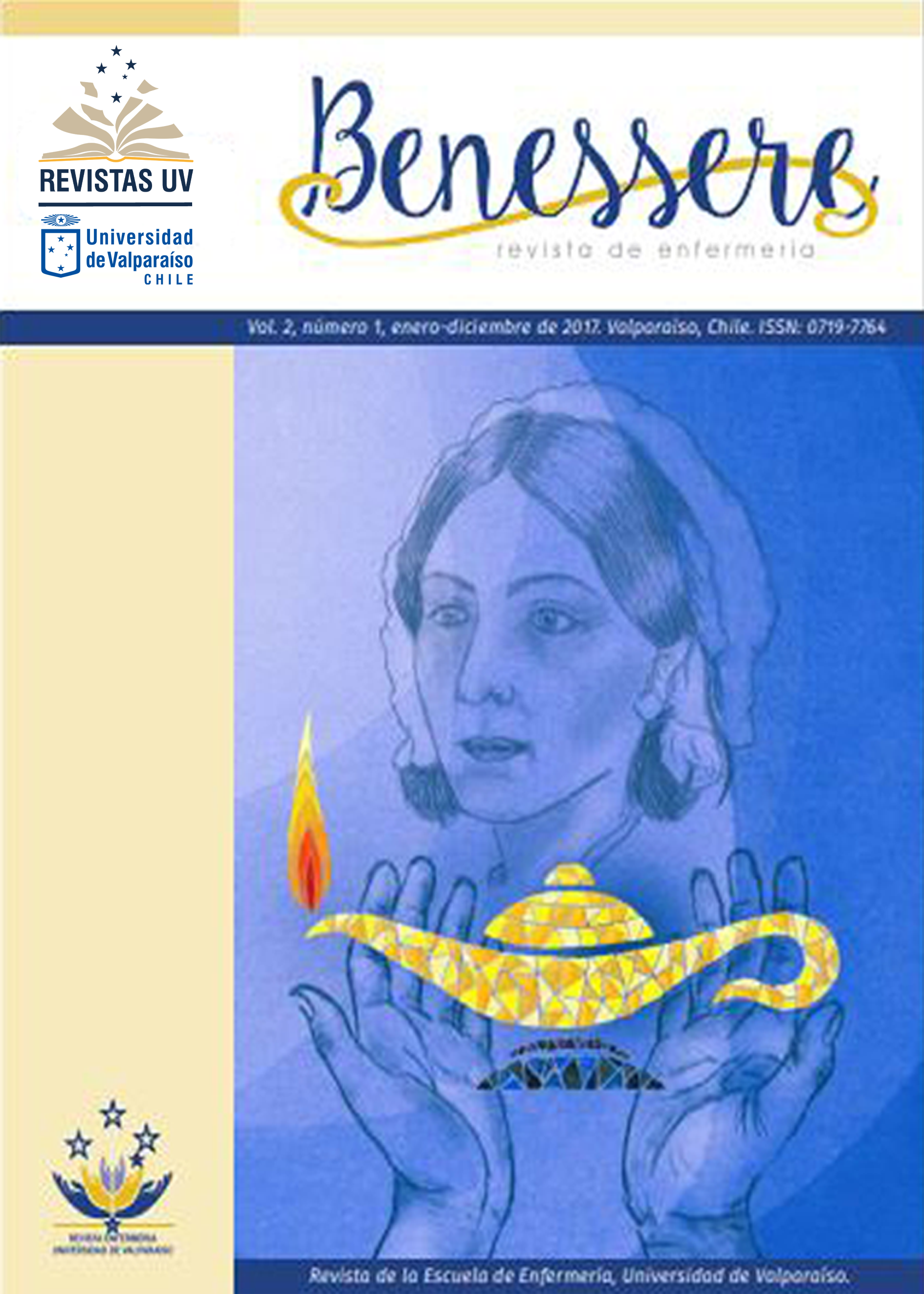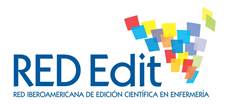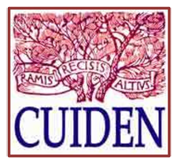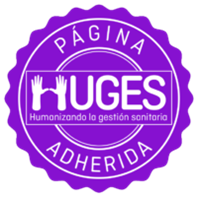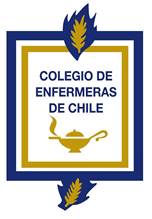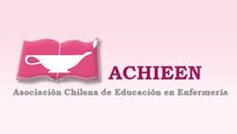Reflexion for curricular innovation in nursing:
enriching content with expert knowledge
DOI:
https://doi.org/10.22370/bre.71.2022.3205.Keywords:
Nursing, Education, CurriculumAbstract
The purpose of this paper is to propose a reflexion on the importance and possibility of incorporating practical knowledge into the curricular content of initial nursing training and considering it when innovating.
The gap between theory and practice in Nursing is recognized. In order to concretely collaborate to reduce this gap between the years 2013 and 2017, an investigation was carried out positioned in the interpretative paradigm that was proposed: to reveal the knowledge that the expert uses in his professional work to project it to the curriculum. This research finally managed to collect the expression of expert knowledge, by using the reflective practice methodology in each of the data collection methods such as permanent observation, incidental interviews and in-depth interviews with experts at the three levels. of health care. Today, after 5 years, the evidence continues to inform us that the theoretical-practical gap is a matter of constant concern, which is why and in view of the processes of curricular innovation, we invite reflection.
Recognizing as possible make explicit the practical knowledge in nursing, we invite you to integrate this situated knowledge into our initial curriculum, which generates the possibility of an enriched curriculum, contextualized with practical reality, a curriculum that moves away from paper and becomes more human .
Downloads
References
Hatlevik IKR. The theory-practice relationship: reflective skills and theoretical knowledge as key factors in bridging the gap between theory and practice in initial nursing education: The
theory-practice relationship. J Adv Nurs [Internet]. 2012;68(4):868–77. Disponible en: http://dx.doi.org/10.1111/j.1365-2648.2011.05789.x
Moss C, Grealish L, Lake S. Valuing the gap: a dialectic between theory and practice in graduate nursing education from a constructive educational approach. Nurse Educ Today [Internet]. 2010;30(4):327–32. Disponible en: http://dx.doi.org/10.1016/j.nedt.2009.09.001
Watson, J. (2008). Nursing Theory. The Philosophy and Science of Caring (Revised ed). Colorado: University Press of Colorado.
Benner, P., Sutphen, M., Leonard, V., & Day, L. (2010). Educating Nurses. A call for radical transformation. Jossey-Bass
Falk K, Falk H, Jakobsson Ung E. When practice precedes theory - A mixed methods evaluation of students’ learning experiences in an undergraduate study program in nursing. Nurse Educ Pract [Internet]. 2016;16(1):14–9. Disponible en: http://dx.doi.org/10.1016/j.nepr.2015.05.010
EL Hussein MT, Osuji J. Bridging the theorypractice dichotomy in nursing: The role of nurse educators. J Nurs Educ Pract [Internet]. 2016;7(3). Disponible en: http://dx.doi.org/10.5430/jnep.v7n3p20
Happell B, Waks S, Horgan A, Greaney S, Manning F, Goodwin J, et al. “It is much more real when it comes from them”: The role of experts by experience in the integration of mental health nursing theory and practice. Perspect Psychiatr Care [Internet]. 2020;56(4):811–9. Disponible en: http://dx.doi.org/10.1111/ppc.12496
Kalogirou MR, Chauvet C, Yonge O. Including administrators in curricular redesign: How the academic-practice relationship can bridge the practice-theory gap. J Nurs Manag [Internet]. 2021;29(4):635–41. Disponible en: http://dx.doi.org/10.1111/jonm.13209
Moscoso P. Desde la realidad del cuidado profesional al aula. 2017. Tdx.cat. [citado el 18 de abril de 2022]. Disponible en: https://www.tdx.cat/bitstream/handle/10803/402106/CPMP_TESIS.pdf?sequence=1&isAllowed=y
Benner, P. (1987). Práctica progresiva en enfermería: Manual de comportamiento profesional.
Schön, D.A (1998) El profesional reflexivo. Como piensan los profesionales cuando actúan. Paidos.
Madden, K., Bowes, K., Miller, M., & Porter, S. (2021). What value do ePortfolios bring to students? Kai Tiaki: Nursing New Zealand, 27, 26–27.
Smith, T. (2021). Guided reflective writing as a teaching strategy to develop nursing student
clinical judgment. Nursing Forum, 56(2), 241–248. https://doi.org/10.1111/nuf.12528
Davey, B. R., Byrne, S. J., Millear, P. M., Dawber, C., & Medoro, L. (2021). Evaluating the impact
of reflective practice groups for nurses in an acute hospital setting. The Australian Journal of Advanced Nursing: A Quarterly Publication of the Royal Australian Nursing Federation, 38(1). https://doi.org/10.37464/2020.381.22015.
Reschke, D. J., Dawber, C., Millear, P. M., & Medoro, L. (2021). Group clinical supervision for nurses: process, group cohesion and facilitator effect. The Australian Journal of Advanced Nursing: A Quarterly Publication of the Royal Australian Nursing Federation, 38(3). https://doi.org/10.37464/2020.383.221
Sundgren, M. K. M., Dawber, C., Millear, P. M., & Medoro, L. (2021). Reflective practice groups and nurse professional quality of life. The Australian Journal of Advanced Nursing: A Quarterly Publication of the Royal Australian Nursing Federation, 38(4). https://doi.org/10.37464/2020.384.355
National League of Nursing. (1988). Curriculum Revolution. Mandate for Change. New York: NLN
Parkay, F. W., Anctil, E. J., & Hass, G. (2014). Curriculum leadership: Readings for developing quality educational programs. Prentice Hall.
Carroll L Iwasiw, Andrusyszyn, M.-A., & Dolly Goldenberg. Curriculum development in nursing education (2020) Jones & Bartlett Learning: Burlington, MA.
Moccia, P. (1989). Curriculum reconceptualization: integrating the voices of revolution. NLN publications, 135–144.
Watson, J., & Woodward, T. K. (2010). Jean Watson’s theory of human caring. Nursing theories and nursing practice, 3, 351–369.
Hande, K., Williams, C. T., Robbins, H. M., Kennedy, B. B., & Christenbery, T. (2017). Leveling evidence-based practice across the nursing curriculum. The Journal for Nurse Practitioners, 13(1), e17–e22.
Bowles, W., Buck, J., Brinkman, B., Hixon, B., Guo, J., & Zehala, A. (2022). Academic-clinical nursing partnership use an evidence-based practice model. Journal of clinical nursing, 31(3–4), 335–346.
Ruppel, K. J., & Bone, B. A. (2022). Teaching evidence-based practice: Knowledge to implementation in a BSN program. Worldviews on Evidence- Based Nursing, 1.
Sacristán, J. G. (2013). Saberes e incertidumbres sobre el currículum. Ediciones Morata.
Nussbaum, M. C. (2017). La fragilidad del bien: fortuna y ética en la tragedia y la filosofía griega (Vol. 202). Antonio Machado Libros.
Lave, J., & Wenger, E. (1991). Situated learning: Legitimate peripheral participation. Cambridge university press.
Mills, W. (2000). The Sociological Imagination. (Fortieth Anniversary Edition). Oxford University Press.
Dewey, J. (1997). Experience and Education. New York: Touchtone. A national Interprofessional competency framework. Retrieved from: http://www.cihc.ca/files/CIHC_IPCompetencies_Feb1210.pdf
Schön, D. A. (1992). La formación de profesionales reflexivos: Hacia un Nuevo diseño de la enseñanza y el aprendizaje en las profesiones. Paidos.
Jackson, F. (1986). «What Mary Didn't Know». Journal of Philosophy (83): 291-295.
Downloads
Published
Issue
Section
License
Aquellos autores/as que tengan publicaciones con esta revista, aceptan los términos siguientes:
- Los autores/as conservarán sus derechos de autor y garantizarán a la revista el derecho de primera publicación de su obra, el cuál estará simultáneamente sujeto a la Licencia de reconocimiento de Creative Commons que permite a terceros compartir la obra siempre que se indique su autor y su primera publicación esta revista.
- Los autores/as podrán adoptar otros acuerdos de licencia no exclusiva de distribución de la versión de la obra publicada (p. ej.: depositarla en un archivo telemático institucional o publicarla en un volumen monográfico) siempre que se indique la publicación inicial en esta revista.
- Se permite y recomienda a los autores/as difundir su obra a través de Internet (p. ej.: en archivos telemáticos institucionales o en su página web) antes y durante el proceso de envío, lo cual puede producir intercambios interesantes y aumentar las citas de la obra publicada. (Véase El efecto del acceso abierto).

